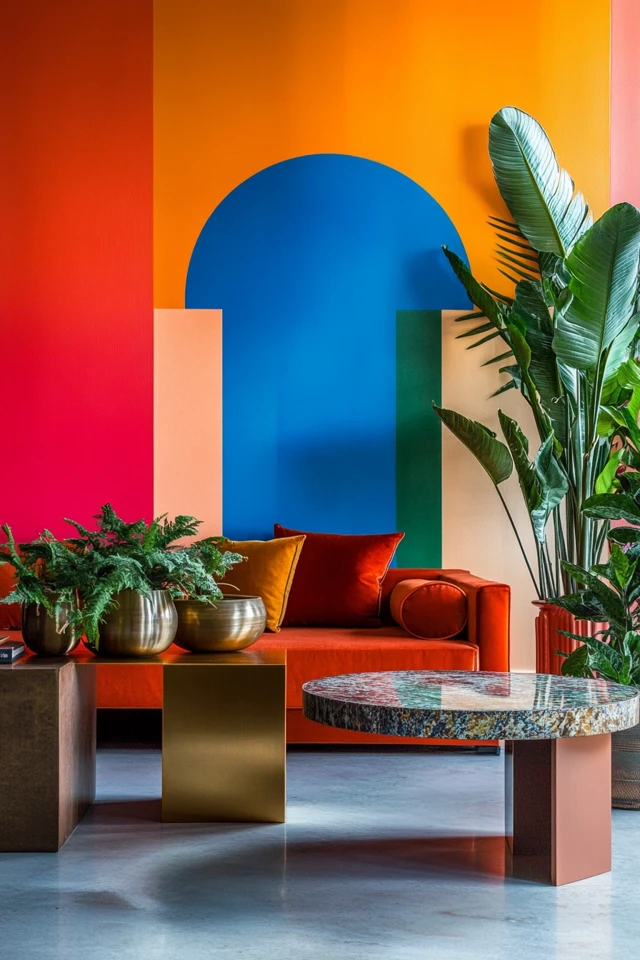Introduction
Color blocking is a bold, playful, and highly customizable way to bring personality and style into your home decor. By combining contrasting or complementary colors in large, defined sections, color blocking transforms ordinary spaces into vibrant, visually striking areas. Whether it’s on walls, furniture, or accessories, this technique allows you to experiment with color in a modern and creative way.
I fell in love with color blocking while designing my home office. The plain white walls felt uninspiring, so I painted a large diagonal block of mustard yellow behind my desk and paired it with navy blue accents. The result was transformative—the space felt energetic and stylish, and the bold colors helped define the work zone within an open layout. It was a simple project that had a huge impact, and it sparked my enthusiasm for incorporating color blocking in other rooms.
If you’re ready to refresh your home with this trendy and artistic technique, this guide will walk you through everything you need to know. From selecting the right colors to applying color blocking across different elements of your decor, let’s explore how to use this eye-catching design method effectively.
Why Color Blocking Works in Home Decor
Color blocking is more than just a design trend—it’s a powerful tool for creating balance, contrast, and visual interest in your space. Here’s why it works so well:
- Defines Spaces: In open-concept layouts, color blocking can help delineate zones, like separating a dining area from a living space.
- Adds Energy: Bold blocks of color energize a room, making it feel vibrant and dynamic.
- Customizable: With countless color combinations and patterns to choose from, color blocking allows you to express your unique style.
- Budget-Friendly Impact: A can of paint and a little creativity can dramatically transform a room without the need for expensive renovations.
Why These Key Elements Work So Well Together
Contrasting and Complementary Colors
Pairing bold contrasts or harmonious complementary shades creates a striking yet balanced look.
Geometric Shapes and Lines
Color blocking often uses clean lines, angles, or organic curves to define spaces and draw attention to specific areas.
Layered Textures
Combining color blocks with textured materials, like woven rugs or velvet furniture, adds depth and interest.
Evidence-Based Design
Studies show that colors influence mood and behavior. Bright colors like yellow and orange evoke energy, while blues and greens promote calmness—making color blocking both aesthetic and functional.
How to Use Color Blocking in Home Decor: Step-by-Step
Step 1: Choose a Color Palette
- Start with a base color that complements your existing decor.
- Add 1–2 bold or contrasting colors for the blocks. Use a color wheel to select complementary or analogous hues.
- Pro Tip: Stick to three colors to maintain balance and avoid overwhelming the space.
Step 2: Decide on Placement
- Identify areas where color blocking can make the most impact, such as walls, furniture, or large decor items.
- Consider architectural features like alcoves, ceilings, or corner spaces for added interest.
- Pro Tip: Use color blocking to highlight specific areas, like a headboard wall in the bedroom or a reading nook in the living room.
Step 3: Experiment With Shapes
- Use geometric shapes like rectangles, triangles, or circles to create bold, clean lines.
- Opt for organic shapes or curved lines for a softer, artistic look.
- Pro Tip: Sketch your design on paper or use painter’s tape to map it out on the wall before painting.
Step 4: Incorporate Color Blocking in Furniture
- Paint sections of a dresser, side table, or bookshelf in contrasting colors for a custom, DIY statement piece.
- Choose furniture with built-in color blocking, like upholstered chairs with dual-tone fabrics.
- Pro Tip: Balance bold furniture with neutral surroundings to keep the look cohesive.
Step 5: Accessorize With Color Blocking
- Add pillows, rugs, or curtains featuring bold, blocked patterns.
- Combine solid-colored decor items, like vases or trays, to create your own color-blocked arrangements.
- Pro Tip: Layer textures within the same color palette to add depth without clutter.
Step 6: Use Color Blocking on Ceilings and Floors
- Paint a section of the ceiling or floor in a bold shade to create an unexpected focal point.
- Use area rugs with bold patterns to introduce color blocking without permanent changes.
- Pro Tip: Match ceiling or floor colors with accents in the room to tie the look together.
Step 7: Balance With Neutral Elements
- Pair bold color blocks with neutral tones like white, gray, or beige to keep the space feeling open and balanced.
- Use natural materials, like wood or stone, to ground the design and add warmth.
- Pro Tip: Let one color dominate and use the others as accents for a cohesive look.
Picture Gallery

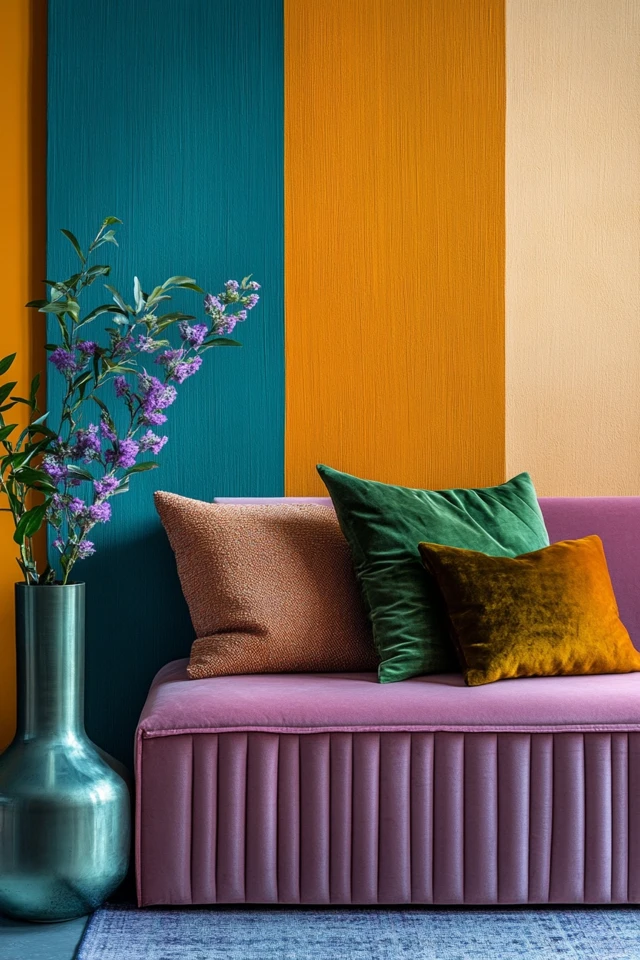

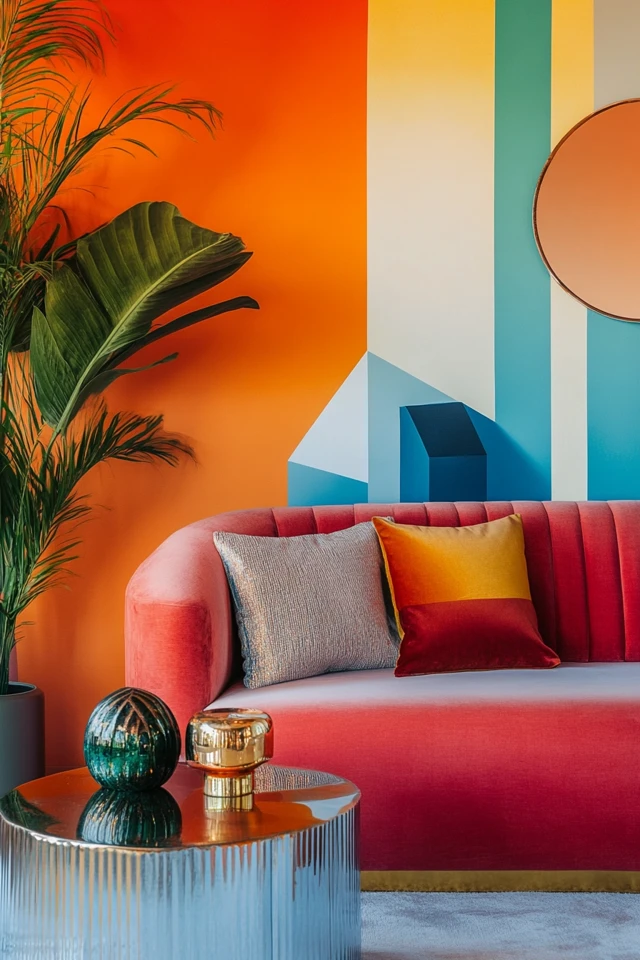
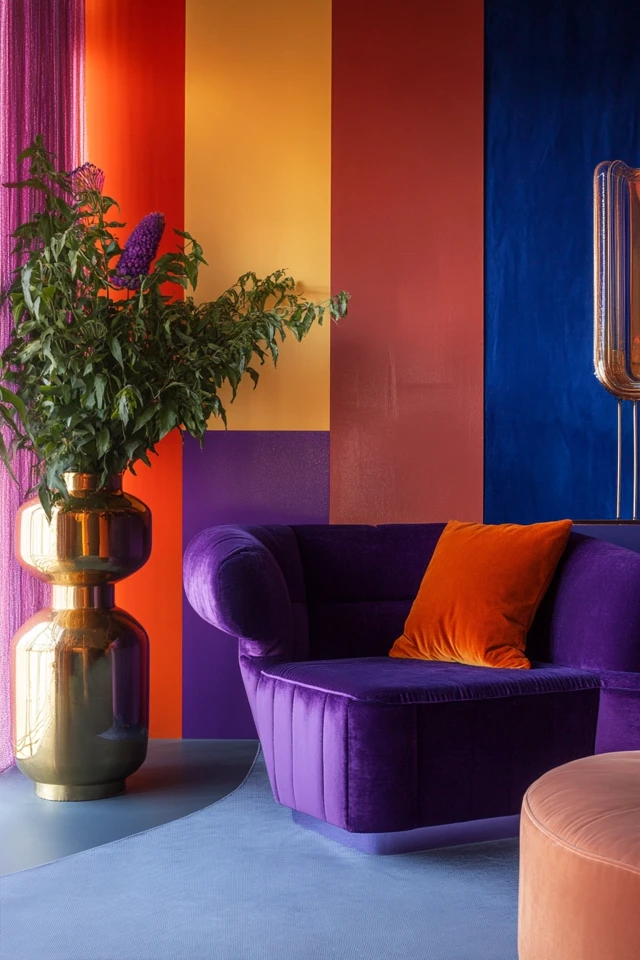
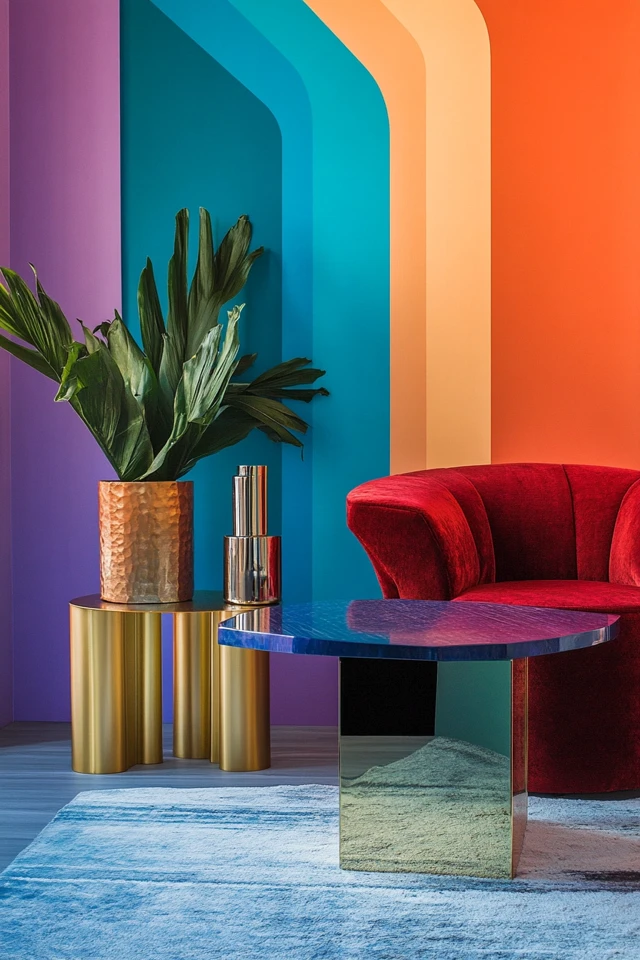


FAQ Section
1. What type of paint is best for color blocking?
Use matte or satin finish paints for a modern look. For furniture, choose chalk paint or acrylic for easy application and durability.
2. Can I use color blocking in a small room?
Yes! Use lighter colors or vertical blocks to make the space feel larger and more open.
3. How do I prevent color blocking from overwhelming the room?
Stick to 2–3 colors and balance bold shades with plenty of neutral elements to maintain harmony.
4. Can I combine color blocking with patterns?
Absolutely! Use patterns sparingly in accessories like rugs or pillows to complement the blocks without competing with them.
5. What’s an easy way to test color blocking before committing?
Use removable wallpaper or decals to experiment with colors and shapes before painting.
Variations
- Modern Minimalism: Stick to monochromatic color blocks with clean lines and subtle contrasts.
- Bohemian Style: Use earthy tones and organic shapes for a relaxed, eclectic vibe.
- Art Deco: Combine jewel tones with metallic accents and geometric patterns for a glamorous look.
How to Showcase It
Living Room
Create a focal wall with diagonal color blocks and complement it with matching throw pillows or a rug.
Bedroom
Highlight the bed by painting a color-blocked headboard directly onto the wall, using contrasting hues.
Kitchen
Use color blocking on cabinet doors or add a backsplash with bold, geometric tiles.
Home Office
Paint a large vertical stripe or half-wall in an energizing color behind your desk to define the workspace.
Occasions to Feature It
- Home Makeovers: Use color blocking to refresh a tired space with bold, modern flair.
- Seasonal Updates: Switch up your color palette seasonally with removable wallpaper or easy DIY paint projects.
- Everyday Living: Enjoy the dynamic and personalized aesthetic that color blocking brings to your home year-round.
Conclusion
Color blocking is a versatile and impactful design technique that brings energy, creativity, and personality to any space. Whether you’re creating bold feature walls, customizing furniture, or accessorizing with blocked patterns, this trend offers endless possibilities for refreshing your home. With thoughtful planning and a cohesive color palette, you can transform your space into a stylish and unique reflection of your taste.
Now it’s your turn—choose your favorite colors, experiment with shapes, and embrace the bold beauty of color blocking. Share your results and inspire others to try this creative design approach!

